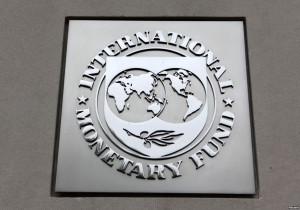By ALY KHAN SATCHU
The IMF released its World Economic Outlook last week. The IMF stated in the outlook report:
”Growth projections were revised down substantially in sub-Saharan Africa, reflecting challenging macroeconomic conditions in its largest economies, which are adjusting to lower commodity revenues. In Nigeria, economic activity is now projected to contract in 2016, as the economy adjusts to foreign currency shortages as a result of lower oil receipts, low power generation, and weak investor confidence. In South Africa, GDP is projected to remain flat in 2016, with only a modest recovery next year.”
 The IMF downgraded sub-Sahara Africa’s Gross Domestic Product from three per cent to just 1.6 per cent and this will mark the slowest rate of growth since the late 1990s. More worryingly, this rate of growth is behind the rate of Population increase meaning SSA is getting poorer. Countries like Zimbabwe feel like they are right at the edge that Hunter S. Thompson described thus: “The edge…there is no honest way to explain it because the only people who really know where it is are the ones who have gone over”.
The IMF downgraded sub-Sahara Africa’s Gross Domestic Product from three per cent to just 1.6 per cent and this will mark the slowest rate of growth since the late 1990s. More worryingly, this rate of growth is behind the rate of Population increase meaning SSA is getting poorer. Countries like Zimbabwe feel like they are right at the edge that Hunter S. Thompson described thus: “The edge…there is no honest way to explain it because the only people who really know where it is are the ones who have gone over”.
Of course, as previously discussed, it is the ‘mono-line’ commodity producers who are in a tail-spin. Policy makers from Luanda to Abuja were praying for a Hail-Mary pass and a recovery in the commodity price structure. Many folks had the 2008/2009 V-shaped recovery in mind. Crude oil which fell from above $100 a barrel in 2014 and touched levels below $30 in January before staging a snap-back to about $50 a few weeks ago is back on the down move and was last below $45. A sustained break below $40 [which looks entirely likely] is going to further slow the continent.
Policy making mistakes are also being brutally punished. Mozambique which was the golden boy in 2014 is now a pariah with its bonds trading at a price of $70 and a yield second only to Venezuela. President Buhari’s King Canute-like fight to maintain the price of the naira for more than a whole year was a monstrous policy failure. He should have devalued the naira on his first day of taking office when his political capital was sky high. The delay was unconscionable and the cost being exacted on the Nigerian economy has been brutal. President Dos Santos is desperately seeking to escape the intrusive clutches of the IMF but his is a bet on a V-shaped recovery in the price of oil.
As I have previously mentioned, East Africa remains the bright spot. I attended a presentation by Moody’s investor services a few days ago themed: Africa’s Growth Centre: Moving East? The presentation pointed out that between 2006 and 2014, six out of 10 fastest growing.
countries were commodity exporters. Five out of the 10 fastest growing sub-Sahara Africa countries between 2015 and 2017 are from East Africa.
An interesting development since the Brexit vote has been that investors have chased yield as they anticipated further monetary easing from Japan to the UK. For example, our 10-year Eurobond has rallied to a yield of 7.40 per cent from just above eight per cent pre-Brexit and a high yield in 2016 of over 9.5 per cent in late January (lower yields equals higher prices while higher yields equals lower prices). This level of 7.4 per cent represents an opportunity for the National Treasury to issue some paper. I would go for a bite-sized issue of around $600m in order to leave the markets wanting more.
Source: Star


